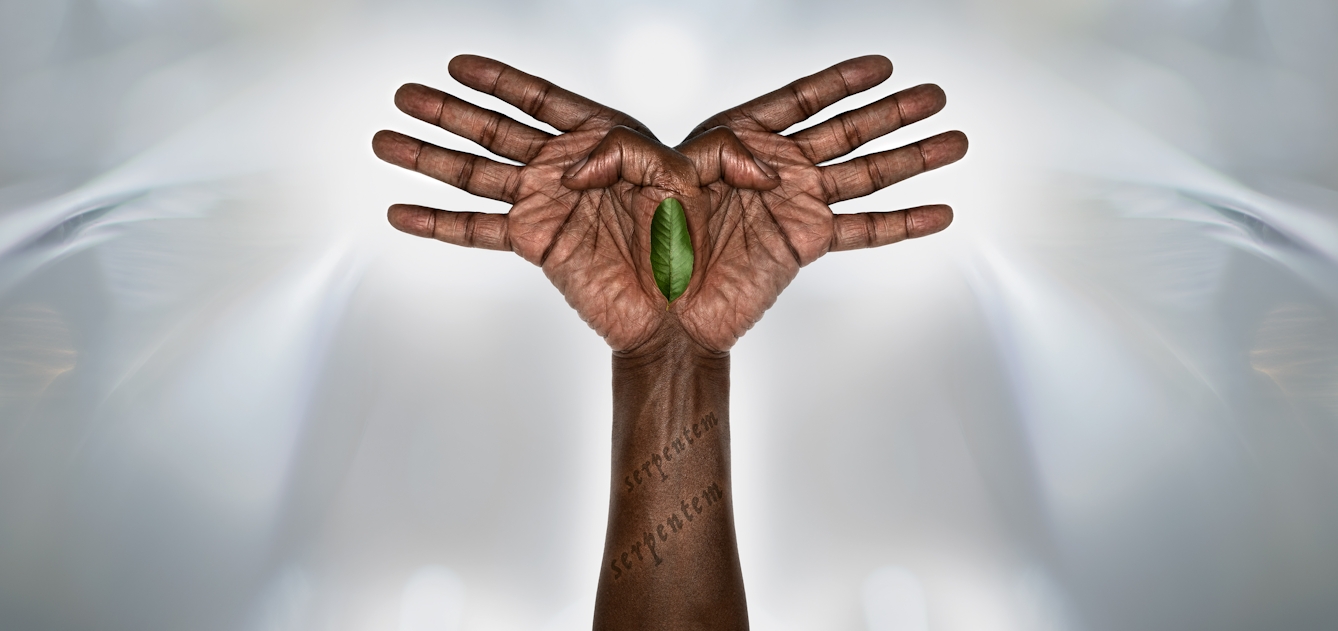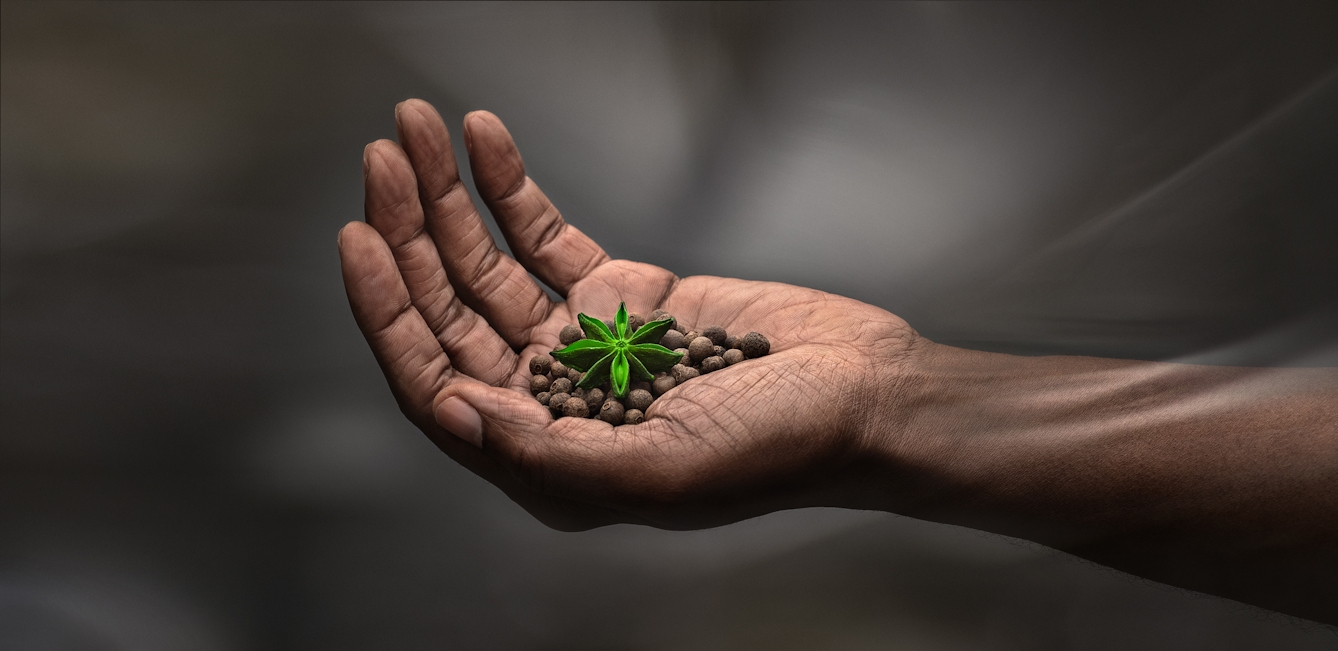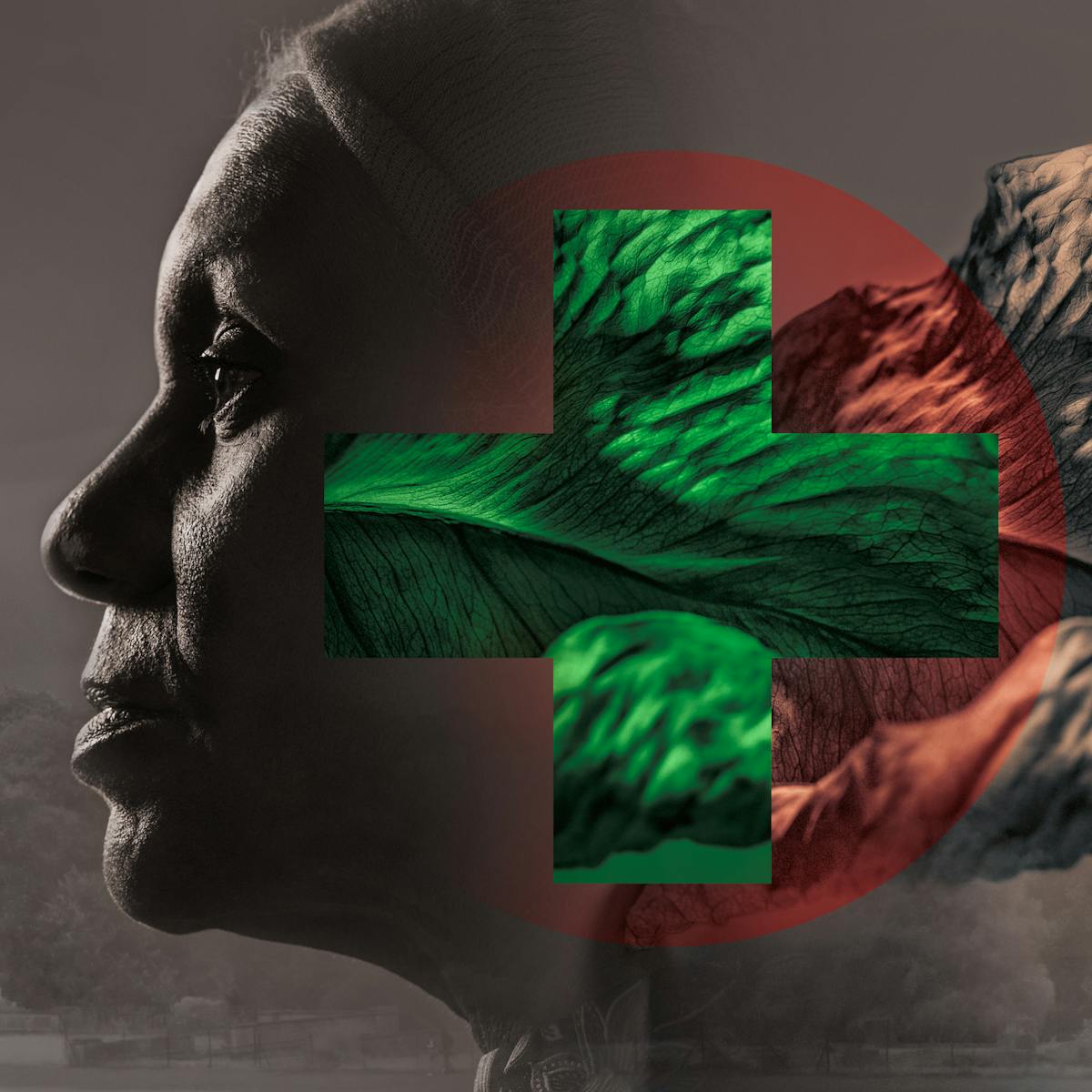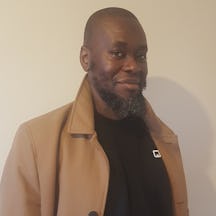Anti-vaxxers have been around for many years, but the Covid-19 pandemic propelled them straight into the public eye, with derision directed towards this widespread “anti-science” group. However, outside the headlines, healthcare sceptics of all kinds have long-held, serious and nuanced reasons for doubting medical authorities – and have a lot to teach governments and healthcare providers about the future of inclusive medicine.
In July of 2021, David Frum, a staff writer for The Atlantic, said what a lot of people on the political Left were thinking: if it weren’t for anti-vaxxers, he complained, “This pandemic could be almost over by now.”
Frum especially aimed this barb at those “conservative, evangelical and rural Americans” who, he contended, took vaccine resistance as a pledge of allegiance to Donald Trump. Whatever the truth of this claim, Frum’s assumption that anti-vaxxers were preventing the pandemic from ending reflected the new celebrity of the “anti-vaxxer”.
Also known as the “vaccine-hesitant”, they vaulted to pandemic infamy on the back of a largely unreasonable but nevertheless remarkably durable public health rumour: that we could vaccinate ourselves out of a pandemic if only the hesitant could be made to comply.
Of course, the pandemic did not invent the figure of the anti-vaxxer. But it did rehabilitate it. For years, this figure had mostly entered the media mainstream as a caricature, quite often in the form of maddeningly irrational parents whose refusal to vaccinate their children against, of all things, measles was grounded in the (widely and multiply debunked) claim that the MMR vaccine caused autism: a claim that the (defrocked and disgraced) medic Andrew Wakefield had invented and promulgated for his own personal gain.
To be sure, for some, as for Frum, the figure of the anti-vaxxer has remained a caricature. But this caricature is of a different sort: a convenient scapegoat upon which to heap the blame for the pandemic’s perceived interminability.
Yet the figure of the anti-vaxxer also entered politics, culture and medicine as a critical puzzle to be understood and unravelled as a matter of utmost urgency. Though most often undertaken for purposes of conversion – to turn the hesitator to enthusiast and the anti-vaxxer to compliant – the new attention paid to the vaccine-hesitant has helped us disaggregate many complex, intertwining issues of public health.
While vaccine hesitancy was often tied to a wide variety of immediate individual or community experiences, these were often also yoked to long-standing political, cultural and economic fractures and the enduring inequities and injustices that have divided up our world for millennia.
The vaccine-hesitant individual is now quite a nuanced figure. And they have lessons to offer about more than just vaccination. Vaccine hesitancy draws our attention to the fact that worries over vaccines often reflect deeper-rooted concerns about far more systemic and longstanding problems in healthcare contexts. Understanding this prompts us to acknowledge the possibility that scepticism about medicine more generally can be, and often is, a reasonable response.
Vaccine hesitancy also opens up something of a Pandora’s box. Healthcare contexts have always been replete with sceptics, whose critiques and hesitancies about medicine have tended to be papered over. Society resists these more marginalised points of view on the rather circular logic that their location outside of the mainstream renders them illegible, inaccurate, or just plain wrong.
Making space for these views, listening to them, understanding and analysing them now has real prospects. In practical, if perhaps slightly cynical terms, this is because scepticism has become a problem that, if solved, might achieve the near total buy-in that solutions to public health crises – like mass vaccination – seem to require.
More importantly, though, investigating the wide variety of health doubts, critiques and worries that constitute health scepticism can help us improve healthcare for all. Especially where health scepticism is a manifestation of the more foundational inequalities and injustices that seed our society, listening to doubters is a fundamental first step. This helps both puncture the misconception that those who stand outside of healthcare do so for reasons that always only point to their own – and not the system’s – failings and insufficiencies, and gather the insights we need about the limitations of our current systems to build a better one.
There are many ways to think about health scepticism, and there are many routes into, and examples of, this thorny problem. But here we want to focus on the limitations of a system that is near and dear to our collective hearts: “Our NHS.”
From the material gathered in the project Healthy Scepticism, funded by King’s College London and undertaken in partnership with our colleagues at the Brixton-based community research organisation Centric, it becomes clear that our contributors from Brixton’s predominantly African and Caribbean population have a series of fundamental health concerns manifested in a web of collective memory, personal experience, and an understanding of institutionalised racism. They recognise, as one contributor candidly put it, that “the NHS is racist”.
Racism in medicine and healthcare
According to a recent study of pandemic-era vaccine hesitancy in Britain, “Black ethnic groups” were far less likely to take up the Covid-19 vaccine than “white British groups”. And one of their key reasons for hesitating was mistrust, both “in the vaccine itself” and in the “authorities administering it”. The solution, this article suggested, was “intensive, targeted and hyper-local initiatives to tackle uptake”.
Mistrust on such grounds would not only be understandable but well-placed. The history of medicine is rife with examples of racism. Perhaps the most well-known instance in the British-American world is the Tuskegee Syphilis Study, which was funded by the United States Public Health Service in 1932 for the purpose of documenting the course of untreated syphilis. For this, it turned to a particularly vulnerable sample population: poor Black men in rural Alabama.
When the study ended 40 years later, in 1972, this was not the result of the discovery of any new therapy. That ship had already sailed, in the late 1940s, when penicillin became widely available. Instead, it came in the form of an exposé on the front page of the New York Times, which recorded with horror both the longstanding nature of the study and its continuation even after treatment was widely available – treatment that was not provided to participants.
Though the whole affair was itself an egregious example of racist medical practice, an especially telling detail of the study was its seeming acceptability, even respectability. “The study was never clandestine,” explained one doctor interviewed for the New York Times article. Indeed, the study’s findings yielded more than a dozen scientific papers in well-respected journals, so that anyone interested in venereal disease, and having at least a fair acquaintance with the research literature, would have known of its existence.
In the Britain of the 1970s, Tuskegee was largely viewed as peculiar to the course of racism in the United States: a world away from the kinds of medical practices to be found in the NHS. Yet what happened at Tuskegee had clear conceptual roots in the medical colonialism of the British Empire itself.

‘Caducei’, 2024. Franklyn Rodgers.
A colonial inheritance
Though this manifested itself in many ways, one telling example took place in the South African gold mines in the early 20th century. The story begins innocuously enough, with the idea that scientists should work on a vaccination for the pneumonia that regularly killed the Central African migrants who took up this mining work.
But the rationale tells a different story: vaccination research was decided upon because it seemed a more efficient and cost-effective solution than having to improve the rather dire and unhealthy working and living conditions that came with the job. Medicine was one way, it was thought, to shortcut the uncomfortable and expensive obligation of providing basic human necessities.
These practices have not gone away. They have overt contemporary resonances as well, especially in the experimental practices that characterise “big pharma”, the moniker given to the industrial sector made up of large multinational pharmaceutical companies, well known for their viperous tendencies.
It is the work of these companies in the Global South – overtly to get around the more rigid rules for experimentation that apply in much of the Global North – that perhaps best exemplifies this medical colonial inheritance.
The long history of medical trials in the Global South have resulted in tangible and immediate harms. Just one among a near-endless supply of examples is the 1996 clinical trial that Pfizer ran in Nigeria during a deadly meningitis outbreak, to test a drug that at the time was in development. Some children were given the gold-standard treatment for meningitis. And some were given Pfizer’s new drug. Eleven children died, and litigation ensued.
Though only five deaths were among those children assigned the experimental drug, the issue turned on one of the same issues that also drove Tuskegee: consent. In this case, parents had not been adequately informed about the trial, so they did not have the information they needed to decide whether or not their children should take part. After more than a decade of litigation, Pfizer finally made substantial financial restitution to those impacted as part of an out-of-court settlement agreement.
The collective memory of these activities not only travels with immigrants from these regions to the UK but is also carried down over the generations. As many participants described, expressing a view common among those who have lived in the nations that comprise big pharma’s experimental playground, people of colour should not be the “guinea pigs” for the rest of the world.
The legacy of Pfizer’s meningitis trial and others like it might well be a certain wariness of drugs that have not yet been used on white bodies, on the grounds that experience had shown that only when this happens can a drug be finally judged safe.
Yet there is equal reason to be wary of drugs – including vaccines – that have not been tested among people of colour. What are the effects, as one contributor worried, of the Covid vaccine on a “Brown girl like me?” For the other side of the healthcare coin is, of course, the recognition that nearly all therapeutics are made for white people, and sometimes only for a tiny sliver of the world's population: white men.
That’s why, as article after article explains, women’s heart attacks remain underdiagnosed; why tools like the pulse oximeter, created for light-skinned individuals, gives erroneous readings on those with darker skin; why even that great achievement, the human genome project, fails the test of representation. For 96 per cent of the studies used to comprise this project were done on people of European origin. This despite the fact, as one researcher tersely observed, that “Europeans make up less than 12 per cent of the world’s population”.
But it also goes the other way: longstanding biases about racial difference (often via the conflation of race and genetics) have led to “corrections” and “race-based scoring adjustments” to diagnostic criteria that also lead to misdiagnoses.
For reasons that remain inexplicable, for example, the American Heart Association’s guidelines for measuring risk of death for those with heart failure “adds three points to non-Black patients’ scores, making it seem as if Black people are at lower risk of dying from heart problems simply by virtue of their race”. But that’s simply not true.
As if this were not already enough, there are also more systemic, less visible issues. As the Zimbabwean lawyer Karsten Noko has described, for example, blood samples taken (often without consent) during the 2014 Ebola crisis in West Africa were used by big pharma for the production and distribution of medicines and therapies that could then be sold back to those whose blood had produced it in the first place.
Why self-care is a political act
A similar pattern holds for treatments extracted from traditional practices. Famous among these are the “discoveries” of things like turmeric and neem oil by “bioprospectors” or, as they are less flatteringly known, “bio-pirates”: terms used to describe people who mine ethnomedical traditions for commercially viable products.
Bio-pirates extract and repackage treatments, getting value from cultural practices that they then, in their form as traditional medicine, deride as unscientific quackery.
We see that pattern in our own healthcare too. In Brixton, as in other communities in the UK, ethnomedical traditions continue to thrive. Here, indigenous medical traditions from one part of the world intermingle with others, each carried over with immigrants as part of a cultural package that also includes familial objects, experiences or expertise.
Many in Brixton acquire their “knowledge of natural treatments from their parents and grandparents”. They might not know much about “pharmaceutical medicine”, as one participant put it, but they know a lot about “natural medicine”.
Mirroring the global context, our own domestic medical politics also deride these practices as unscientific, ineffective and problematic, without acknowledging (or possibly even understanding) the debt that Western medicine owes to these same traditions.

‘Untitled’, 2024. Franklyn Rodgers.
As our contributors recognised, so-called Western medicine is not in this sense best characterised via standards like effectiveness or accessibility. Instead, it is better understood as “hegemonic”: an example of an all-too familiar “medical imperialism” that has simply never gone away.
Thinking about medicine in this way does not necessarily mean that any particular ethnomedical or conventional set of therapies deserves valorisation in its own right. Instead, the important thing is the opportunity it presents to radically reframe our conversation.
Effectiveness is not the only, or even the best, way to compare medical traditions. Instead, we should pay attention to how the lines between conventional, Western medical practices and their ethnomedical “alternatives” are drawn.
In this reframing, the value of ethnomedical practices change. For, as one contributor put it, the “general consensus in the community” is that “natural herbs, teas are better for you than popping pills”. This consensus is not just about what is more effective, but also about the agency that following ethnomedical or natural traditions also provides.
According to Paul Addae, the research lead on this project, there is an emphasis within many Black communities on the “liberating agency or control over one’s health” that people can possess within ethnomedicine, whereas the mainstream “limits agency, restricts control, and silences interaction”.
As the writer Stephanie Phillips eloquently put it in her 2021 book ‘Why Solange Matters’, self-care is “an inherently transgressive act… [that is] about putting oneself in a better position to understand and dismantle the systems that have required us to need self-care in the first place”.
Following an ethnomedical or natural medical regime is not just another manifestation of scepticism, but a kind of critical and dynamic activism. As one researcher put it, activism can take the form of “countering conventional norms in favour of sustainable lifestyles and personal betterment” and it can involve promoting alternative healers and lifestyles.
A person retaining their own cultural medical practices, then, restores a modicum of the power and agency that the long history of Western medicine has taken.
Anti-establishment activism
Where self-care is a critical form of activism, Brixton is perhaps best understood as a community teeming with activists, who, in taking their health into their own hands, have simultaneously retained and preserved their own cultural and ethnomedical traditions and expressed a quiet but potent critique of the mainstream.
Brixton is well known historically as a “counter-public sphere”, as Addae and Centric’s founder Shaun Danquah explains. A major hub for Britain’s Windrush generation, Brixton became a welcoming refuge in a racially polarised country.
Those attracted to Brixton for its increasingly radical reputation over the 1970s and 80s, when “Black Panthers, militant squatters and revolutionary feminists” were a neighbourhood staple, also played their role in the alignment of ethnomedicine with the anti-establishment activism of the then radical Left.
Brixton was playing out in radical microcosm the strands of health activism that were blooming in macro. The growing anti-colonial, anti-imperial and more general anti-establishment activism that characterised Brixton reflected a worldwide emergence of a range of critiques of mainstream medicine coming from marginalised groups, including women, people of colour, and people diagnosed with mental illnesses.
Against the backdrop of the civil rights movement and in the context of America’s insurance-based healthcare system, Black people in the US railed against an institutionally racist medical system and advocated radical alternatives.
In 1966, Huey P Newton and Bobby Seale wrote a Ten-Point Program for the Black Panther Party, a Marxist-Leninist and Black Power political organisation. In 1972, they modified the Program to add: “We Want Completely Free Health Care for All Black and Oppressed People. We believe that the government must provide, free of charge, for the people, health facilities which will not only treat our illnesses, most of which have come about as a result of our oppression, but which will also develop preventive medical programs to guarantee our future survival.”
Then as now, though, there were direct efforts to reform the existing system; at the same time there were anti-racist activists intent on operating outside or beyond the mainstream entirely. The Black Panthers, for example, also emphasised the importance of self-care both in response to the collective trauma of racism and as a way of activating against it. There is a clear parallel here between the notion of self-care as an activist agenda then and some of its contemporary manifestations in Brixton.
Critiques of medicine, founded in anti-racist activism and inspired by a profound scepticism of healthcare institutions and professionals, flourished in mid-20th-century Britain as well. Both the Black Panthers and British activists turned their attention to sickle cell disease, a neglected genetic disease that predominantly affected people of African descent. UK voluntary groups such as the Sickle Cell Society and the Organisation for Sickle Cell Anaemia Research produced collective narratives of patient experience within the NHS that critiqued the care provided as discriminatory and harmful.
Unlike the Black Panthers in the US, British anti-racist activists were dealing with the NHS – a free-at-the-point-of-care service. However, universal healthcare turned out not to be so universal. In 1980, the British government published ‘Inequalities in health: report of a research working group’, which came to be known as the ‘Black Report’. Intended as celebratory, the report instead revealed “stark, widening class divisions in terms of health and illness”. It mentioned race only briefly, instead blaming poverty for health inequalities.
However, many activists adopted another line, identifying key problems with the existing system and arguing that poor health outcomes were not just problems of poverty, but a result of medical racism.

‘Untitled’, 2024. Franklyn Rodgers.
The power of inclusive practice
Medicine has changed since the 1980s. But many people see that change as partial, insufficient or misdirected. And, as we’ve seen, health scepticism and activism has not gone away. Nor has its day passed, as the activist agenda of Centric itself illustrates.
An especially cogent example of what health activism looks like now comes in the work of Brixton-based Femi Aseru, or “Farmer Femi” as he is more affectionately known in the community. Via his business, Life of a Tree, Aseru supplies all things moringa – moringa tea, moringa kombucha, pressed moringa oil, moringa powder, moringa seeds, moringa capsules and much more – to an ever-growing market for wellness and alternative medicinal therapies.
Moringa is – as Aseru’s business name suggests – a tree. Native to parts of Africa and India, it has been used for centuries as a source of food and for its healing attributes. Its leaves are used to make a vitamin-rich tea or ground to make a powder; its seed pods can be pressed into an oil with anti-inflammatory properties, and extracts from other parts of the tree are said to have antioxidant, antibiotic and antifungal properties. Nearly every part of the tree can be used in some way. For those who sing its praises, it is indeed a “miracle tree”.
Given the appropriative practices of big pharma, Aseru’s business is his activism. In entering a marketplace to offer alternatives to conventional medicine, Aseru facilitates on a more systemic level the kind of self-care that can make up health activism.
But the activist agenda is even more explicit than this. For Aseru, the problem is not about which are the right “cures”. It is about the mechanics of who produces these cures (and who has the right to) and how they are brought to market in the first place.
Aseru’s moringa business embodies a different activist agenda: to prevent the co-opting of traditional medical therapies by the large, global organisations of big pharma and to preserve and share an ethnomedical inheritance – Aseru’s own – in a responsible, sustainable and representative way.
Life of a Tree trains and employs farmers in a rural village in his native Nigeria where the moringa is grown and harvested. And at the other end of the business in London, Aseru trains and employs young people in the London neighbourhood where he grew up, supporting not only their work with Life of a Tree but also cultivating their own business and entrepreneurial aspirations.
Ultimately, whether a particular pill or therapy cures us as individuals is not the only question to consider. How this pill came to be – at what cost and to whom – matters too.
If producing a medicine means the appropriation of indigenous knowledge and culture, the introduction of destructive industrial cultivation practices, and the subsequent monopolisation of the market, well, these are factors that must be considered too – not just for the ruinous potential of medicine’s aggressively capitalist tendencies, but for the real socio-ecological and health costs that these activities leave in their wake.
Echoing some of the earlier agendas of 1970s activism around acknowledging the intrinsic costs of medicine as an industry and a system, Aseru and others working towards this type of activism are also deeply aware of the politics of our time, whose watchwords are representation, inclusion and sustainability.
The many ways to feel better
Listening to healthcare’s doubters, and to those in counter-public spheres like Brixton, shows the narrow and myopic view that the mainstream has taken about the “right way” to do health.
It demonstrates the ways in which ethnomedicine is regularly pilfered and then vilified by the bioprospecting traditions that create the mainstream. And it reminds us that those outside the mainstream have, more often than not, been exiled there by its unaccommodating, non-inclusive character. All of this can be found in the activist turning away from the mainstream and towards self-care.
Yet the keeping and maintaining of ethnomedical traditions is not only reactive. Crucial here indeed is the observation that the Western medical tradition that the NHS embodies is not the only game in town. We have grown comfortable in the belief that the hegemony of modern medicine is not a cultural phenomenon but a scientific and thus factual and universal one.
The contributors to the Healthy Scepticism project, however, point out that effective medicine looks like many things, some of which draw from ethnomedical traditions that travel as people do, from continent to continent and culture to culture.
What constitutes “good” or the “right kind” of healthcare, or which evidence we must use to make this healthcare are not the only questions we need to ask. If we are serious about making healthcare that is inclusive and representative, we must consider the more ephemeral question of what makes people feel better, according to notions of health that are as variable as we are.
Solutions are not simple. And these observations may well raise more questions than they answer. For example, if effectiveness is not the only metric that matters in medicine, if we see qualities like inclusion and representation as crucial, how must a system like the NHS change to be healthier?
More radically, is reform even the right next step? Or would we do better to simply acknowledge that other systems work alongside to provide modes and means of healing that the NHS simply cannot? Or would – finally – recognising inclusion and representation as being valuable for mainstream health services, as they are in cultural medical traditions, be one more appropriation?
As Addae astutely notes, the rise of medical pluralism more largely, in no small part thanks to the booming global wellness industry, will likely force some sort of reconciliation between the mainstream of healthcare and the many different ethnomedical traditions – whether repackaged as wellness or not – that stand outside of it. The important part of this is perhaps not if, then, but how we choose to frame and conduct this reconciliation. If it is to be properly about inclusion and representation, those watchwords of medicine now, it is critical to understand, Addae says, that just as important as the advantages of these ethnomedical therapies themselves is the agency that is carved back, individually and collectively, by the act of choosing in the first place.
About the contributors
Caitjan Gainty
Caitjan Gainty is a writer and historian of medicine at King’s College, London. She writes about a broad range of health-related topics, from snake oil to medical AI, and was honoured to be named the 2021 recipient of the Sir Paul Curran Prize for excellence in academic journalism from The Conversation. Caitjan is currently working on a book called ‘Healthy Scepticism’, which tracks the dynamic history of health scepticism across the millennia and especially focuses on its value for positive healthcare change. Together with Agnes Arnold-Forster, she runs the Healthy Scepticism project.
Agnes Arnold-Forster
Dr Agnes Arnold-Forster is a writer and historian of healthcare, medicine, and the emotions. She is the author of two books, ‘The Cancer Problem’ (OUP, 2021) and ‘Cold, Hard Steel: The Myth of the Modern Surgeon’ (MUP, 2023) and her third, ‘Nostalgia: A History of a Dangerous Emotion’, will be published by Picador in April 2024. She is a Chancellor’s Fellow at the University of Edinburgh, and together with Caitjan Gainty, she runs the Healthy Scepticism project.
Paul Addae
Paul Addae is Healthwatch Haringey Manager. He has extensive experience in health inequalities research, and has worked in a range of environments, including with young offenders, people with complex needs, and those with a range of managed long-term care needs. Paul’s research experience includes The Social Innovation Partnership (TSIP), where he conducted interviews for a Covid-19 lived-experience insight-gathering project, and delivered a project to explore medical scepticism in South London with Centric Community Research.
Franklyn Rodgers
Franklyn Rodgers is an artist and creative director whose work explores innovative approaches to re-examining the portrait in contemporary visual culture. His work not only investigates portraiture through narrative, content and context, but also how their placement can open new dialogues in challenging the idea of representation within the language of photography. He has exhibited internationally and his work is held in the permanent collections of the National Portrait Gallery, Tate Britain, Lloyds of London, Welcome Collection, Autograph, Queen Mary University of London and Arts Council England.




